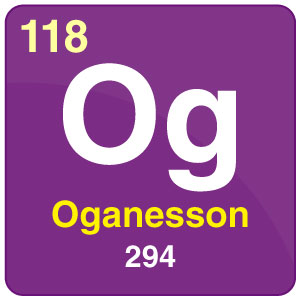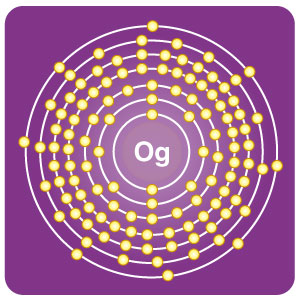
| Symbol | Og |
| Atomic Number | 118 |
| Atomic Mass | 294 |
| Discovered by | Joint Institute for Nuclear Research and Lawrence Livermore National Laboratory(2002) |

| Electronegativity according to Pauling | Unknown |
| Density | 4.9–5.1 g/cm3 ( Estimated) |
| Melting Point | Unknown |
| Boiling Point | 80±30 °C |
| Van Der Waals radius | Unknown |
| Ionic Radius | Unknown |
| Isotopes | Unknown |
| Electronic Shell | [Rn] 5f14 6d10 7s2 7p6 |
| Energy of First Ionisation | 839.4 kJ/mol |
Ununoctium is a transactinide chemical element with symbol Uuo and atomic number 118. It was first created by a joint team of American and Russian scientists at the Joint Institute for Nuclear Research in Dubna, Russia. Ununoctium is a temporary name and the suggested name is Oganesson which may be formally accepted by the end of 2016.
The element has the highest atomic mass and highest atomic number of all elements in the periodic table. It has very unstable radioactive atomic nuclei and is predicted to be in a solid state as it has realistic effects. In the periodic table, it is the last element of the 7th period and a p-block element. Ununoctium is predicted to have the same properties as elements present in the same group it belongs to.
These kinds of elements are always prepared artificially as they never occur naturally in the Earth’s crust. As it can never be present in the Earth’s crust, there is no need to worry about health effects of it.
Presently, there are no uses or applications except that it is used for research. Biological use of it is yet to be known.

Comments